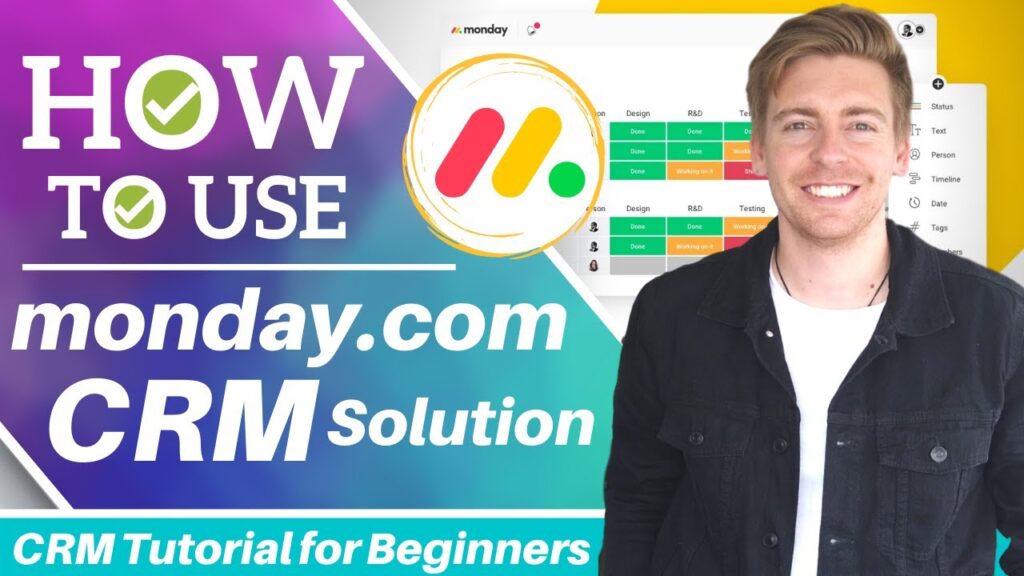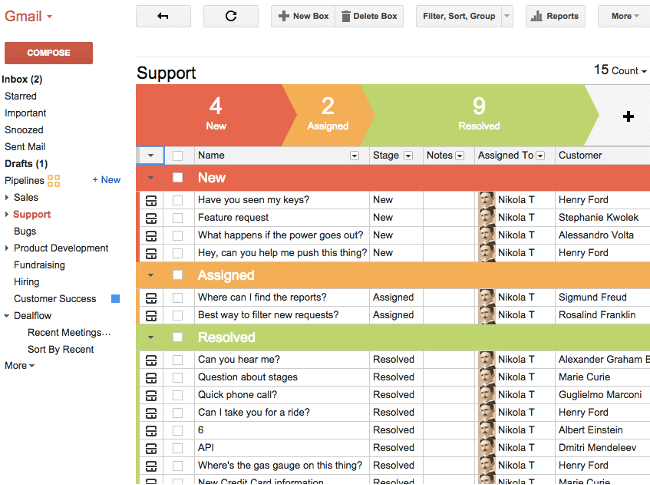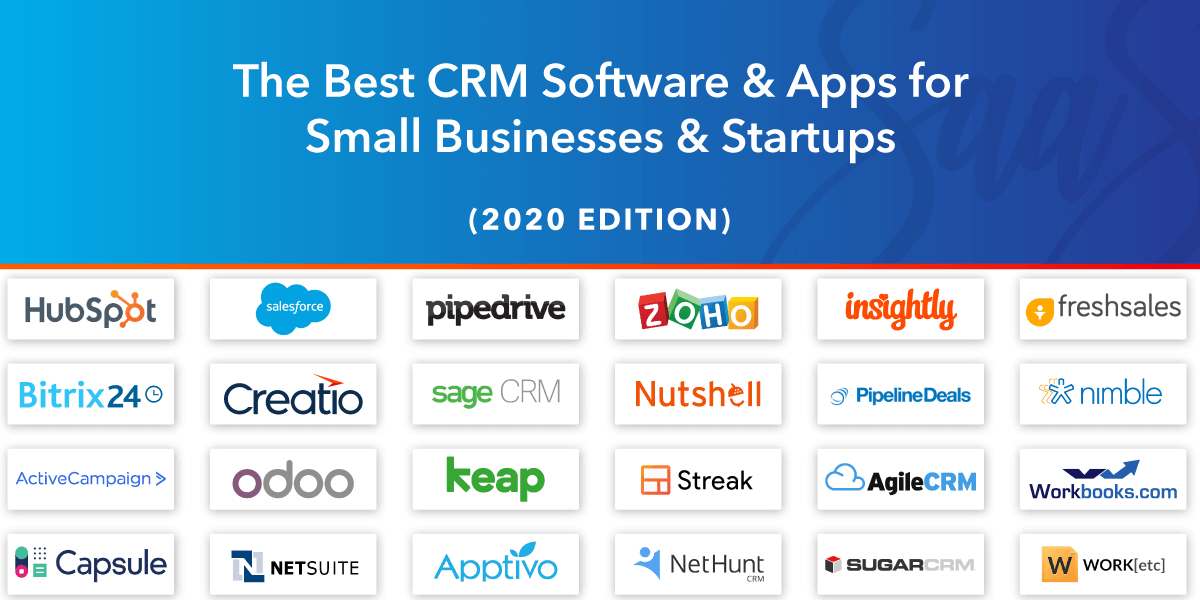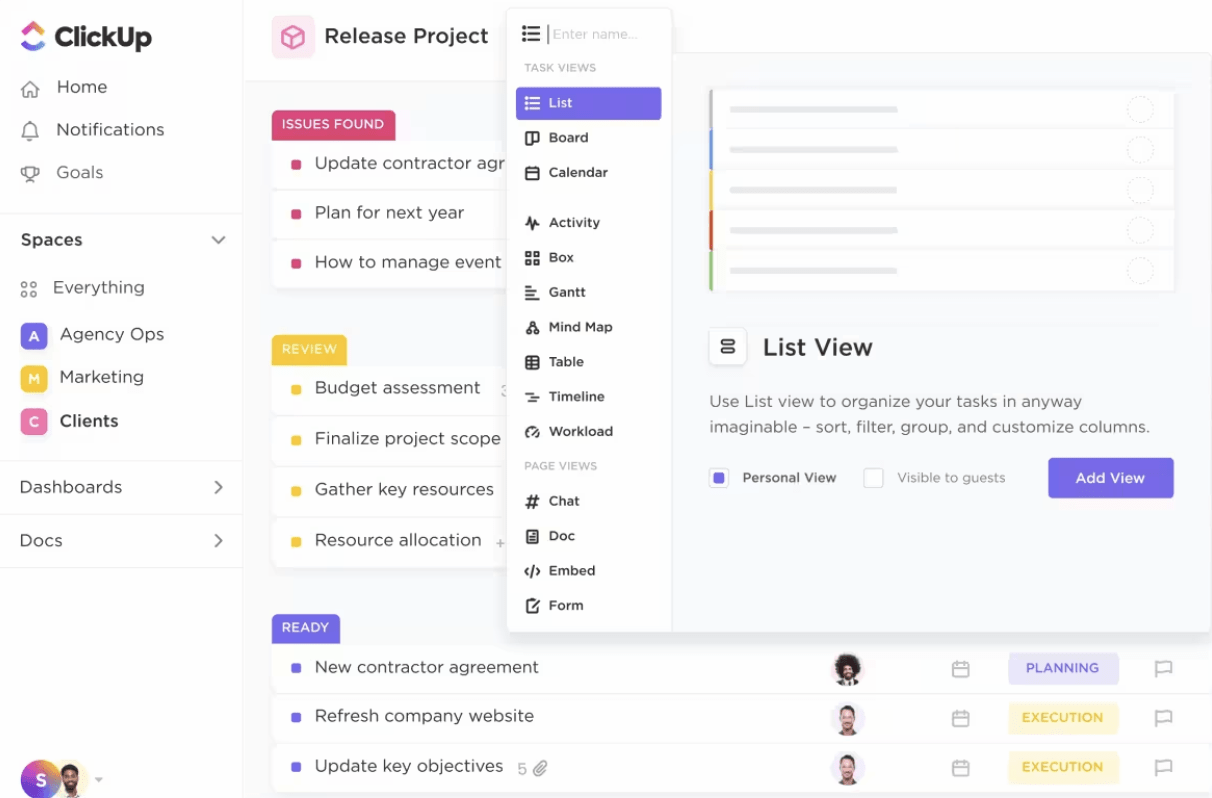
Small Business CRM Tutorial: Your Complete Guide to Customer Relationship Management
Running a small business is like juggling flaming torches while riding a unicycle. You’re constantly balancing multiple tasks, from product development and marketing to sales and customer service. And let’s be honest, keeping track of everything – especially your customers – can feel like an impossible feat. That’s where a Customer Relationship Management (CRM) system comes in. Think of it as your trusty sidekick, helping you manage all those moving parts and, ultimately, grow your business.
This comprehensive small business CRM tutorial will guide you through everything you need to know. We’ll cover what a CRM is, why you need one, how to choose the right system, and even how to implement it successfully. Get ready to transform the way you interact with your customers and boost your bottom line!
What is a CRM? Decoding the Acronym
CRM stands for Customer Relationship Management. At its core, a CRM is a software solution designed to help businesses manage and analyze customer interactions and data throughout the customer lifecycle. It’s much more than just a contact list. It’s a central hub for all your customer information, allowing you to:
- Store and organize customer data: Names, contact information, purchase history, communication logs, and more.
- Track interactions: Emails, phone calls, meetings, and social media interactions.
- Automate tasks: Sales processes, marketing campaigns, and customer service workflows.
- Analyze data: Gain insights into customer behavior, sales performance, and marketing effectiveness.
- Improve customer relationships: Provide personalized experiences and build stronger connections.
In essence, a CRM empowers you to understand your customers better, anticipate their needs, and provide exceptional service. This, in turn, leads to increased sales, improved customer loyalty, and sustainable business growth.
Why Does Your Small Business Need a CRM? The Benefits Explained
You might be thinking, “My business is small. Do I really need a CRM?” The answer is a resounding YES! Even if you’re just starting out, a CRM can be a game-changer. Here’s why:
- Improved Customer Relationships: This is the cornerstone of any successful business. A CRM helps you personalize interactions, remember important details, and provide timely and relevant support. Imagine knowing a customer’s birthday or remembering their preferred product. That level of personalization fosters loyalty and keeps them coming back for more.
- Increased Sales: A CRM streamlines your sales process, allowing you to track leads, manage opportunities, and close deals more efficiently. You can identify high-potential prospects, nurture them through the sales funnel, and ultimately convert them into paying customers.
- Enhanced Sales Productivity: Automate tedious tasks, like data entry and follow-up emails, freeing up your sales team to focus on what they do best: selling. CRM systems can automate email sequences, schedule appointments, and generate sales reports, saving valuable time and effort.
- Better Data Organization: Say goodbye to scattered spreadsheets and lost contact information. A CRM provides a centralized database for all your customer data, ensuring everyone in your team has access to the same information. This eliminates confusion, improves collaboration, and ensures consistent customer service.
- Improved Marketing Effectiveness: CRM systems integrate with marketing tools, enabling you to segment your audience, personalize marketing campaigns, and track their performance. You can identify your most valuable customers, target them with relevant offers, and measure the ROI of your marketing efforts.
- Data-Driven Decision Making: A CRM provides valuable insights into your customer behavior, sales performance, and marketing effectiveness. You can analyze this data to identify trends, make informed decisions, and optimize your business strategies. For example, you can identify which marketing channels are most effective or which products are most popular.
- Scalability: As your business grows, your CRM system grows with it. You can add new users, features, and integrations as needed, ensuring your CRM continues to meet your evolving needs. A CRM is an investment in your future, providing a solid foundation for long-term success.
In short, a CRM is not just a luxury; it’s a necessity for any small business that wants to thrive in today’s competitive market. It helps you build stronger customer relationships, increase sales, and make data-driven decisions.
Choosing the Right CRM for Your Small Business: A Step-by-Step Guide
Choosing the right CRM can feel overwhelming, with so many options available. But don’t worry, we’ll break it down into manageable steps to help you find the perfect fit for your business.
1. Define Your Needs and Goals
Before you start shopping, take some time to clarify your business goals and needs. Ask yourself:
- What are your primary business objectives? Are you focused on increasing sales, improving customer service, or streamlining marketing efforts?
- What are your pain points? What challenges are you currently facing in managing your customer relationships?
- What features are essential? Do you need sales automation, marketing automation, customer service ticketing, or all of the above?
- Who will be using the CRM? Consider the needs of each team member and how they will interact with the system.
- What is your budget? CRM pricing varies widely, so determine how much you’re willing to spend.
Answering these questions will help you create a clear picture of your requirements and narrow down your options.
2. Research CRM Providers
Once you know your needs, it’s time to research different CRM providers. Here are some popular options for small businesses:
- HubSpot CRM: A free, all-in-one CRM with robust features for sales, marketing, and customer service. It’s a great option for businesses looking for a comprehensive solution without breaking the bank.
- Zoho CRM: A feature-rich CRM with a wide range of integrations and customization options. It’s known for its affordability and scalability.
- Salesforce Sales Cloud: A powerful and customizable CRM, suitable for businesses of all sizes. It offers a vast array of features and integrations, but can be more complex to set up and manage.
- Pipedrive: A sales-focused CRM designed for ease of use and visual pipeline management. It’s a good choice for businesses that prioritize sales performance.
- Freshsales: A sales CRM with built-in phone, email, and chat functionality. It’s ideal for businesses that need to communicate with customers directly within the CRM.
When researching, consider factors like:
- Features: Does the CRM offer the features you need, such as sales automation, marketing automation, and customer service ticketing?
- Ease of Use: Is the CRM user-friendly and easy to navigate?
- Integrations: Does the CRM integrate with your existing tools, such as email marketing platforms, accounting software, and social media channels?
- Pricing: Does the CRM fit within your budget?
- Customer Support: Does the provider offer reliable customer support?
- Reviews and Ratings: Read reviews from other users to get an idea of their experiences.
3. Try Free Trials and Demos
Most CRM providers offer free trials or demos. Take advantage of these opportunities to test out different systems and see which ones best suit your needs. During your trial, pay attention to:
- User Interface: Is the interface intuitive and easy to navigate?
- Features: Do the features meet your requirements?
- Performance: Does the system run smoothly and efficiently?
- Customer Support: Test the customer support to see how responsive and helpful they are.
This hands-on experience will help you make an informed decision.
4. Consider Customization and Scalability
As your business grows, your CRM needs will evolve. Choose a CRM that allows for customization and scalability. Can you add new users, features, and integrations as needed? Can you customize the system to fit your specific business processes?
5. Make Your Decision
After evaluating your options, it’s time to make a decision. Choose the CRM that best meets your needs, fits within your budget, and offers the features and integrations you require. Don’t be afraid to take your time and do your research. This is an important investment that will impact your business for years to come.
Implementing Your CRM: A Practical Guide
So, you’ve chosen your CRM. Now comes the exciting part: implementation! This process can seem daunting, but with careful planning and execution, you can ensure a smooth transition. Here’s how to get started:
1. Plan Your Implementation
Before you dive in, create a detailed implementation plan. This plan should include:
- Define your goals: What do you hope to achieve with your CRM implementation?
- Identify your data sources: Where will you be importing data from? (e.g., spreadsheets, existing databases)
- Assign roles and responsibilities: Who will be responsible for different aspects of the implementation?
- Set a timeline: Establish realistic deadlines for each stage of the implementation.
- Allocate resources: Determine the budget for training, data migration, and other expenses.
A well-defined plan will help you stay organized and on track.
2. Data Migration: Getting Your Information In
Migrating your existing data to the CRM is a crucial step. Here’s how to do it effectively:
- Clean your data: Remove duplicates, correct errors, and standardize your data format. The cleaner your data, the better your CRM will perform.
- Choose a data migration method: You can manually enter data, use a data import tool, or hire a data migration service.
- Map your data fields: Ensure that data from your existing sources is mapped correctly to the corresponding fields in your CRM.
- Test your data migration: Before importing all your data, test the process with a small sample to ensure everything is working correctly.
- Import your data: Once you’re satisfied with the results, import the rest of your data.
Proper data migration is essential for a successful CRM implementation. Poorly migrated data can lead to inaccuracies, wasted time, and frustrated users.
3. Customize Your CRM
Most CRM systems offer customization options. Customize the system to fit your specific business processes. This might involve:
- Creating custom fields: Add fields to store specific information that’s relevant to your business.
- Customizing workflows: Automate your sales, marketing, and customer service processes.
- Setting up integrations: Connect your CRM to other tools, such as email marketing platforms and accounting software.
- Personalizing dashboards and reports: Create dashboards and reports that provide the information you need to track your progress and make informed decisions.
Customization allows you to tailor the CRM to your unique needs and maximize its value.
4. Train Your Team
Training is critical for CRM adoption. Provide comprehensive training to your team members, covering:
- Basic CRM functionality: How to navigate the system, enter data, and find information.
- Specific processes: How to use the CRM for sales, marketing, and customer service.
- Best practices: Guidelines for using the CRM effectively and consistently.
- Ongoing support: Provide ongoing support and training to address any questions or issues that arise.
Invest in training to ensure that your team members are comfortable using the CRM and understand how to leverage its features. This will maximize user adoption and ensure that you get the most out of your investment.
5. Go Live and Monitor Performance
Once your team is trained, it’s time to go live! Launch the CRM and start using it in your daily operations. Monitor the system’s performance and address any issues that arise. Collect feedback from your team members and make adjustments as needed. Regularly review your CRM usage and make sure that you’re achieving your goals. Continuously optimize your CRM to get the most out of it.
Maximizing Your CRM: Tips and Tricks for Small Businesses
Now that your CRM is up and running, here are some tips and tricks to help you get the most out of it:
- Keep Your Data Clean and Updated: Regularly review and update your data to ensure its accuracy. Inaccurate data can lead to missed opportunities and poor customer service.
- Use Automation to Your Advantage: Automate repetitive tasks to save time and improve efficiency. Automate email marketing campaigns, follow-up sequences, and other processes to streamline your workflow.
- Segment Your Audience: Segment your customer base to personalize your marketing efforts. Target specific groups with relevant offers and messages to increase engagement and conversions.
- Track Key Metrics: Monitor key metrics, such as sales performance, customer satisfaction, and marketing ROI. Track your progress and make adjustments as needed to optimize your results.
- Integrate with Other Tools: Integrate your CRM with other tools, such as email marketing platforms, accounting software, and social media channels, to streamline your workflow and improve efficiency.
- Provide Excellent Customer Service: Use your CRM to provide personalized customer service. Track customer interactions, remember important details, and provide timely and relevant support.
- Get Feedback from Your Team: Regularly solicit feedback from your team members on how the CRM is working for them. Use their feedback to make improvements and optimize the system.
- Stay Up-to-Date: CRM systems are constantly evolving. Stay up-to-date on the latest features and best practices to ensure that you’re getting the most out of your system.
By following these tips, you can maximize the value of your CRM and achieve your business goals.
Common CRM Challenges and How to Overcome Them
Even with careful planning, you might encounter some challenges during your CRM journey. Here are some common issues and how to address them:
- Lack of User Adoption: This is a common problem. Ensure that you provide adequate training and support to your team members. Encourage them to use the CRM by highlighting its benefits and providing incentives.
- Poor Data Quality: Inaccurate data can undermine your CRM efforts. Implement data cleaning procedures, and encourage your team to enter data accurately and consistently.
- Complexity: Some CRM systems can be complex to use. Choose a CRM that’s user-friendly and easy to navigate. Customize the system to simplify processes and eliminate unnecessary features.
- Integration Issues: Integrating your CRM with other tools can sometimes be challenging. Ensure that the CRM you choose offers seamless integration with your existing tools.
- Cost: CRM systems can be expensive. Choose a CRM that fits within your budget and offers a good return on investment. Consider free or low-cost options if you’re on a tight budget.
By anticipating these challenges and taking proactive steps to address them, you can ensure a successful CRM implementation.
The Future of CRM for Small Businesses
The CRM landscape is constantly evolving. Here are some trends to watch:
- Artificial Intelligence (AI): AI is being integrated into CRM systems to automate tasks, provide insights, and personalize customer interactions.
- Mobile CRM: Mobile CRM apps are becoming increasingly popular, allowing you to access your CRM data on the go.
- Social CRM: Social CRM integrates social media data into your CRM, providing a more comprehensive view of your customers.
- Personalization: CRM systems are becoming more sophisticated in their ability to personalize customer experiences.
- Integration: CRM systems are increasingly integrating with other business tools, such as marketing automation platforms and e-commerce platforms.
By staying informed about these trends, you can ensure that your CRM strategy remains relevant and effective.
Conclusion: Embracing CRM for Small Business Success
A CRM system is a powerful tool that can help small businesses build stronger customer relationships, increase sales, and achieve sustainable growth. By understanding the benefits of CRM, choosing the right system, implementing it effectively, and maximizing its value, you can transform the way you do business. Don’t let your customer relationships fall through the cracks. Embrace the power of CRM and watch your small business thrive!
This tutorial has provided you with a comprehensive guide to small business CRM. From understanding the basics to implementing and optimizing your system, you now have the knowledge to make informed decisions and take your business to the next level. Remember to choose a CRM that aligns with your specific needs and goals, and never stop learning and adapting as the CRM landscape evolves.
Now go forth and conquer your customer relationships! The future of your small business is in your hands.


